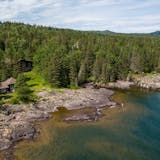Earlier this month, a crew working to clean up the long-closed Gold King mine in Colorado unintentionally breached an earthen dam, releasing an estimated 3 million gallons of mine wastewater into Colorado's Animas River and prompting the governors of Colorado, New Mexico and Utah, as well as the Navajo Nation, to declare states of emergency.
Mining opponents point to the tragedy as an example of everything that's wrong with mining and, in Minnesota, why proposed copper-nickel mining shouldn't happen here.
A look at the history of mining should give us reassurance that mining, and particularly copper-nickel mining, is right for Minnesota.
Gold King is an underground mine that operated from the 1890s to the 1920s, long before the creation of today's environmental regulatory structure. For example, the Environmental Protection Agency was created in 1970, the Clean Water Act was passed in 1972 and the Mine Safety and Health Administration created in 1977. Our state-level regulatory body, the Minnesota Pollution Control Agency, was not created until 1967.
Mines that are built in the U.S. and Minnesota today must pass rigorous environmental review and adhere to strict state and federal regulations that were not in place during the lifetime of the Gold King mine.
"The great news is that modern mining does not allow the release of these waters," said Elizabeth Holley, assistant professor of mining engineering at the Colorado School of Mines. "The bad news is we owe [Colorado] statehood to mining prior to any environmental regulations."
The contrast between historic and modern mining is stark, in terms of both environmental and safety performance. Mines built and operated throughout the country before the advent of modern mining regulations are burdened with heavy environmental liabilities. Some have become superfund sites or are candidates for the listing, as was the Gold King.
However, since 1990, there have been more than 1,000 hard-rock mines planned, sited and operated on U.S. Forest Service and Bureau of Land Management lands, and none has become a superfund site.


